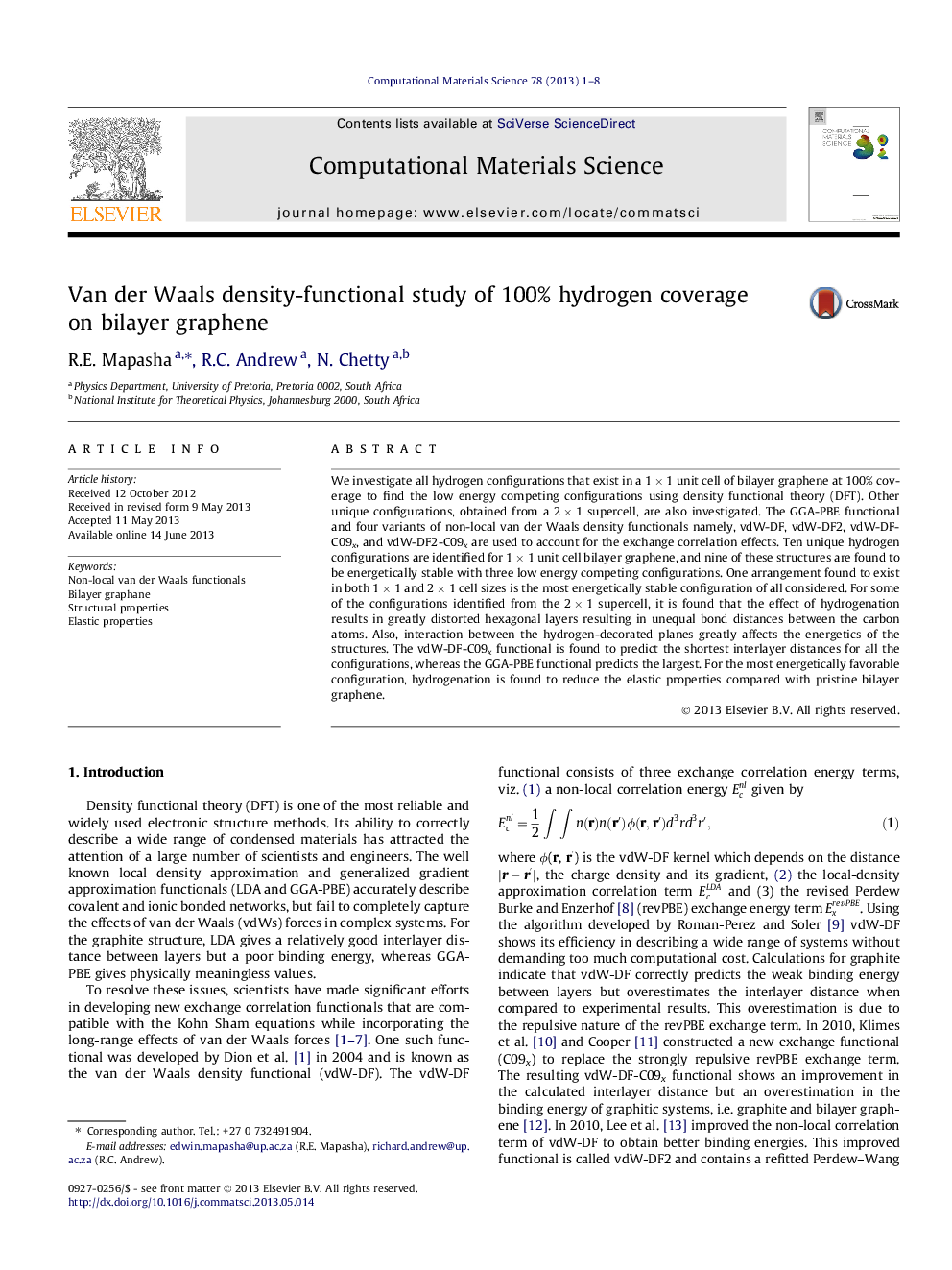| Article ID | Journal | Published Year | Pages | File Type |
|---|---|---|---|---|
| 7961547 | Computational Materials Science | 2013 | 8 Pages |
Abstract
We investigate all hydrogen configurations that exist in a 1Â ÃÂ 1 unit cell of bilayer graphene at 100% coverage to find the low energy competing configurations using density functional theory (DFT). Other unique configurations, obtained from a 2Â ÃÂ 1 supercell, are also investigated. The GGA-PBE functional and four variants of non-local van der Waals density functionals namely, vdW-DF, vdW-DF2, vdW-DF-C09x, and vdW-DF2-C09x are used to account for the exchange correlation effects. Ten unique hydrogen configurations are identified for 1Â ÃÂ 1 unit cell bilayer graphene, and nine of these structures are found to be energetically stable with three low energy competing configurations. One arrangement found to exist in both 1Â ÃÂ 1 and 2Â ÃÂ 1 cell sizes is the most energetically stable configuration of all considered. For some of the configurations identified from the 2Â ÃÂ 1 supercell, it is found that the effect of hydrogenation results in greatly distorted hexagonal layers resulting in unequal bond distances between the carbon atoms. Also, interaction between the hydrogen-decorated planes greatly affects the energetics of the structures. The vdW-DF-C09x functional is found to predict the shortest interlayer distances for all the configurations, whereas the GGA-PBE functional predicts the largest. For the most energetically favorable configuration, hydrogenation is found to reduce the elastic properties compared with pristine bilayer graphene.
Related Topics
Physical Sciences and Engineering
Engineering
Computational Mechanics
Authors
R.E. Mapasha, R.C. Andrew, N. Chetty,
